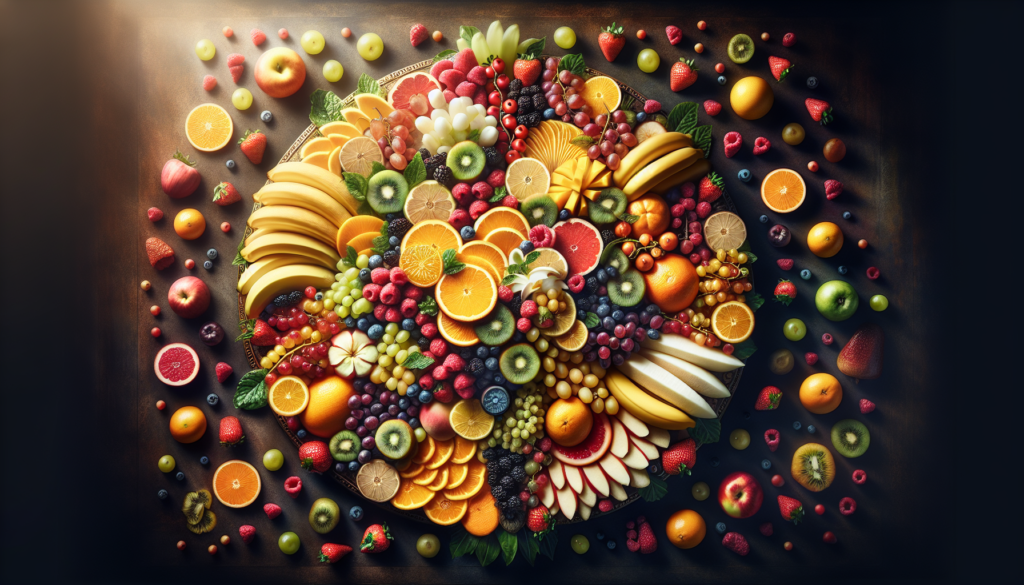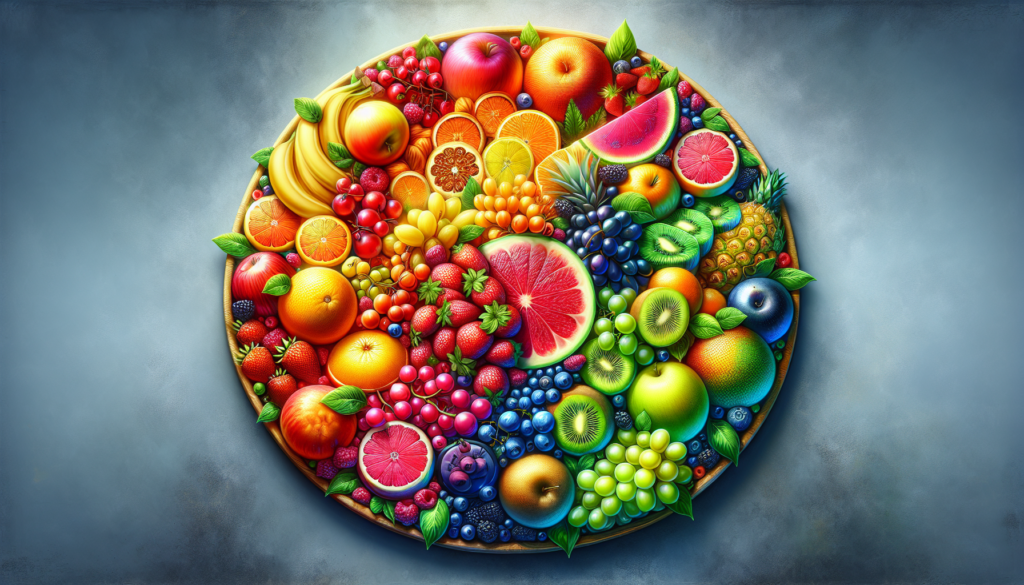Are you a passionate foodie with a flair for writing? If so, it’s time to embark on an exciting journey into the world of food blogging! Whether you dream of sharing your favorite family recipes, reviewing trendy restaurants, or documenting your own culinary adventures, this beginner’s guide will equip you with essential tips and tricks to get your food blog up and running. From choosing the perfect niche to creating mouthwatering food photography, we’ve got you covered. Get ready to tantalize taste buds and inspire fellow food enthusiasts as you dive into the delicious world of food blogging!

Choose your niche
Deciding on a specific type of food or cuisine for your blog is a crucial step in starting your food blogging journey. By choosing a niche, you can narrow down your focus and cater to a specific target audience. Whether you’re passionate about baking delicious desserts, exploring authentic Thai cuisine, or diving into the world of vegan cooking, selecting a niche will help you stand out in the vast food blogging industry.
Consider your target audience when choosing your niche. Think about who you want to reach with your blog and what kind of content would capture their interest. Are you targeting health-conscious individuals looking for nutritious recipes? Or perhaps you want to cater to busy parents searching for quick and easy family meals. Understanding and identifying your target audience will help you create content that resonates with them.
Researching popular niches in the food blogging industry can give you valuable insights into what’s currently trending and in demand. Look at successful food blogs and analyze their content, engagement, and audience. This research will not only help you choose a niche that aligns with your interests but also ensure there is a demand for it in the market.
Select a catchy blog name
Once you have decided on your niche, it’s time to brainstorm name ideas for your blog. Your blog name should be catchy, memorable, and reflect the essence of your niche. Use your creativity and think of names that evoke a sense of excitement and curiosity related to your chosen type of food or cuisine.
Ensure that the name you choose is unique and not already in use by another food blog. You want your blog name to stand out and be easily recognizable. Conduct a quick search online and on social media platforms to ensure that your chosen name is available and not overly similar to existing blogs.
Checking domain availability is crucial when selecting a blog name. A .com domain is often preferred, as it is more common and easier for users to remember. Make sure the domain for your chosen name is available and register it before someone else snatches it up.
Set up your blog
To set up your food blog, you will need to choose a blogging platform that suits your needs. Popular blogging platforms like WordPress and Blogger offer user-friendly interfaces and a range of customizable options. Consider the features, flexibility, and ease of use offered by each platform before making your decision.
Once you have chosen a blogging platform, you will need a reliable web hosting provider to ensure your blog is accessible to visitors. Research different hosting providers and consider factors such as server uptime, customer support, and pricing. Select a plan that meets your requirements and fits within your budget.
Registering a domain is the next step in setting up your blog. As mentioned earlier, ensure that the domain name you choose is available and represents your blog’s name and niche well. Registering a domain usually involves a small fee, but it is a vital investment to establish your brand and provide a professional image.
Installing and customizing a blog theme will give your website a unique and visually appealing look. Explore the theme options available on your chosen blogging platform and select one that complements your niche and aligns with your blog’s design preferences. Customize the theme by adding your own branding elements and personal touch, making it truly your own.
Setting up essential plugins on your blog will enhance its functionality and improve the user experience. Plugins can help with SEO optimization, social media integration, contact forms, and more. Research popular plugins in the food blogging community and install those that are vital to the success and smooth operation of your blog.
Create high-quality content
Creating high-quality content is at the heart of any successful food blog. To engage your audience and keep them coming back for more, follow these tips for creating compelling blog posts.
Developing a content plan and schedule is key to consistently delivering fresh and exciting content. Outline the topics and recipes you plan to write about and create a schedule to ensure a steady stream of posts. This will not only help you stay organized but also provide structure and direction for your blog.
When writing blog posts, aim to be engaging and informative. Share your personal experiences, tips, and insights to make your content relatable and valuable to your audience. Use a friendly and conversational tone to connect with your readers and establish a sense of community.
Including appealing food photography in your blog posts is a must. Invest in a good camera and lens to capture mouthwatering images of your dishes. Experiment with different angles, lighting, and compositions to create visually stunning photographs that make your readers’ taste buds tingle.
Don’t be afraid to experiment with different recipe formats to keep your content fresh and exciting. Whether it’s step-by-step instructions, video tutorials, or recipe cards, find the format that works best for your audience and showcase your culinary creations in an engaging and accessible way.
Consider incorporating storytelling into your posts. Share the inspiration behind your recipes, the cultural significance of certain dishes, or the memories associated with your favorite foods. Storytelling adds depth and personal connection to your content, making it more memorable and engaging.

Optimize your blog for search engines
To increase your blog’s visibility and attract more organic traffic, optimizing it for search engines is essential. Follow these tips to improve your blog’s SEO (search engine optimization).
Perform keyword research to target relevant topics that people are actively searching for. Tools like Google Keyword Planner can help you identify popular keywords and phrases related to your niche. Incorporate these keywords naturally into your blog posts to make them more searchable.
Optimize your blog posts with SEO techniques, such as using descriptive titles, headers, and meta tags. Include relevant keywords in your post titles, headings, and throughout the content to improve your ranking in search engine results.
Improving your website’s loading speed and ensuring it is mobile responsive is crucial for user experience and SEO. Users expect fast-loading websites, and search engines prioritize mobile-friendly websites. Optimize images, reduce unnecessary plugins, and choose a responsive theme to enhance your website’s performance.
Create a user-friendly navigation menu that makes it easy for visitors to explore your blog. Categorize your recipes and content in a logical and intuitive manner, allowing users to find what they’re looking for with ease. A clear and organized navigation menu enhances the user experience and encourages visitors to stay longer on your blog.
Utilize internal and external linking in your blog posts. Link to other relevant pages or blog posts within your own site to improve navigation and encourage readers to explore further. Additionally, include links to reputable external sources to provide additional information and improve the authority and credibility of your content.
Promote your blog
Promoting your blog is essential to reach a wider audience and increase visibility. Here are some effective strategies to promote your food blog and attract more readers.
Utilize social media platforms to share your content with your followers. Create accounts on platforms like Instagram, Facebook, and Pinterest, and regularly post enticing images and links to your blog posts. Engage with your audience by responding to comments, asking questions, and encouraging discussion.
Engagement with your audience is crucial for building a loyal following. Respond to comments on your blog and social media platforms, showing appreciation for their feedback and answering any questions they may have. Engaging with your audience fosters a sense of community and encourages them to keep coming back for more.
Guest posting on popular food blogs can increase your blog’s exposure to a wider audience. Reach out to fellow food bloggers and offer to write a guest post that aligns with their blog’s audience and niche. This not only introduces your blog to new readers but also helps you establish relationships within the food blogging community.
Collaborating with influencers and other bloggers in the food industry can expand your reach and attract their followers to your blog. Consider partnering with influencers for recipe collaborations, hosting giveaways, or featuring them in guest posts. Collaboration allows you to tap into established audiences and gain credibility within the food blogging community.
Utilize SEO techniques and online advertising to increase your blog’s visibility in search engine results. Incorporate relevant keywords into your content, optimize meta tags and descriptions, and consider running targeted online advertisements to reach your ideal audience.
Monetize your blog
Once your food blog gains traction and attracts a significant audience, you can explore monetization opportunities. Here are some common methods to monetize your blog:
Joining affiliate marketing programs allows you to earn a commission by promoting products or services related to your niche. Research affiliate programs that align with your blog’s content and partner with brands and companies whose products you genuinely recommend and use.
Displaying advertisements on your blog is a common way to generate revenue. Sign up for ad networks like Google AdSense or Mediavine to start displaying relevant ads on your blog. However, ensure that the ads do not compromise the user experience or overwhelm your content.
Creating sponsored content and brand partnerships can provide additional income streams. Collaborate with brands that align with your niche and values to create sponsored blog posts or social media campaigns. Make sure the partnerships are authentic and genuine, delivering value to both your audience and the brand.
Offering your own products or services is a great way to monetize your expertise. Consider developing and selling e-books, online courses, or merchandise related to your niche. Your audience trusts your knowledge, and offering valuable products or services is a natural extension of your blog.
Consider creating a premium content section on your blog. Provide exclusive content or access to a subscription-based section for dedicated followers who are willing to pay for additional content. This can include personalized meal plans, advanced recipes, or exclusive behind-the-scenes content.
Build and engage with your audience
Building a loyal audience is crucial for the long-term success of your food blog. Here are some strategies to build and engage with your readers:
Encourage readers to subscribe to your email list by offering exclusive content, such as a free recipe e-book or a weekly newsletter with insider tips. Building an email list allows you to communicate directly with your audience and keep them informed about new blog posts, special offers, and updates.
Create a newsletter with exclusive content to reward your email subscribers. Share bonus recipes, cooking tips, or behind-the-scenes insights that are not available on your blog. This extra value encourages readers to stay subscribed and fosters a sense of exclusivity and loyalty.
Interact with your audience through comments on your blog posts and social media platforms. Respond to their questions, thank them for their feedback, and encourage discussions. Engaging with your audience helps build a community around your blog and establishes a personal connection with your readers.
Offer incentives for sharing your blog posts, such as hosting giveaways or offering exclusive discounts. Encourage readers to share your content on their social media platforms or with their friends and family. Word-of-mouth is a powerful tool and can significantly expand your blog’s reach.
Participate in food-related communities and forums to connect with like-minded individuals and expand your network. Join online groups or forums specific to your niche, actively participate in discussions, and share your expertise. Building relationships with fellow food enthusiasts can lead to valuable collaborations and exposure for your blog.
Learn basic photography and food styling techniques
High-quality food photography is essential for a successful food blog. Enhance your photography skills with these tips:
Invest in a good camera and lens to capture enticing images of your dishes. While professional equipment is not necessary, having a camera capable of shooting in manual mode and producing high-resolution images will greatly improve the quality of your photographs.
Master food photography composition by experimenting with different angles, props, and backgrounds. Seek inspiration from other food photographers and learn how to arrange your dishes to create visually appealing compositions. Use the rule of thirds, leading lines, and negative space to add interest and balance to your images.
Experiment with lighting techniques to highlight the textures, colors, and details of your food. Natural light is often the preferred option, as it produces soft and flattering results. Shoot near a window or outside during the golden hours for beautiful natural lighting. In case of low light conditions, invest in artificial lighting options like softboxes or reflectors.
Learn post-processing and editing to enhance your food photographs. Use editing software like Adobe Lightroom or Photoshop to adjust exposure, colors, and sharpness. However, remember to maintain a natural and realistic look; excessive editing can make your images appear artificial.
Develop food styling skills to make your dishes visually appealing. Pay attention to plating techniques, garnishes, and the overall presentation of your food. Experiment with different props, fabrics, and utensils to create a unique and inviting look for your photographs.
Stay inspired and continue learning
To stay ahead in the dynamic world of food blogging, it’s important to stay inspired and continuously learn. Here are some tips to keep the creative juices flowing:
Follow other food bloggers and chefs for inspiration. Explore their content, learn from their techniques, and engage with their posts. This not only helps you stay up to date with the latest trends but also fosters meaningful relationships within the food blogging community.
Attend food-related events, workshops, and conferences to learn from industry experts and network with like-minded individuals. These events offer opportunities to participate in cooking demonstrations, attend seminars, and get hands-on experience with new recipes and techniques.
Read books and online resources that provide food blogging tips and insights. There are numerous resources available that offer guidance on photography, recipe development, writing, and social media marketing. Expand your knowledge and stay updated with industry best practices.
Experiment with new recipes and ingredients to keep your content fresh and exciting. Challenge yourself to try out different cuisines, cooking techniques, and unique flavor combinations. Your readers will appreciate your adventurous spirit and enjoy joining you on a culinary journey.
Seek feedback from your audience and continuously strive to improve. Ask for their input on what they enjoy most about your blog and what they would like to see more of. Regularly assess and analyze your blog’s performance to identify areas for growth and make adjustments accordingly.
Starting a food blog is an exciting endeavor that allows you to share your passion for food with the world. By selecting a niche, creating high-quality content, optimizing for search engines, promoting your blog, monetizing your efforts, building an engaged community, and continuously learning, you can establish a successful and fulfilling food blogging journey. So grab your apron, sharpen your photography skills, and dive into the delicious world of food blogging!

Paul is a digital marketing and blogging specialist who shares his knowledge and experience on his blog. He writes about topics such as SEO, PPC advertising, social media marketing, content marketing, email marketing, analytics and much more. Paul’s goal is to provide his readers with the information and resources they need to create and implement successful digital marketing campaigns and a profitable blog.
